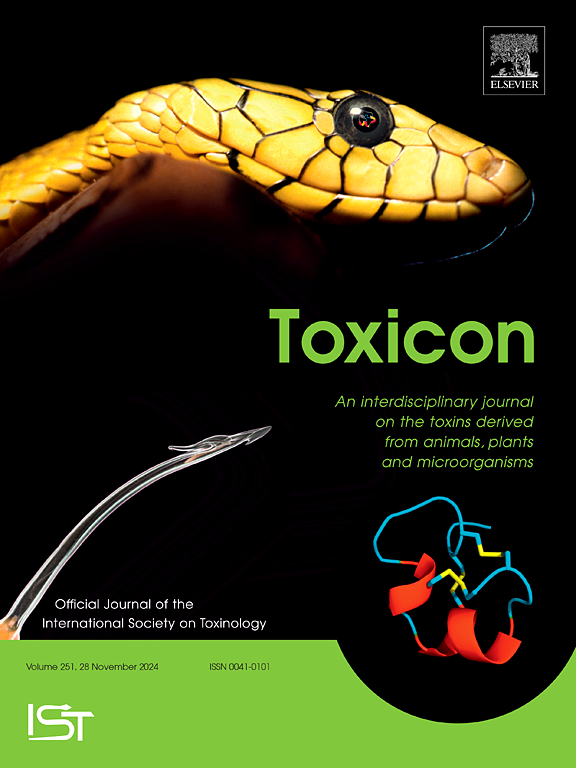评估肉毒杆菌毒素治疗复杂性区域疼痛综合征的疗效:系统回顾
IF 2.6
4区 医学
Q2 PHARMACOLOGY & PHARMACY
引用次数: 0
摘要
复杂性区域疼痛综合征(CRPS)的特点是疼痛、肿胀、活动范围受限、皮肤变化、血管运动不稳定和骨质脱钙。本研究旨在评估 A 型肉毒毒素(BoNT-A)治疗 CRPS 的疗效。我们遵循 PRISMA 指南,采用 PICO 策略(患者、干预、比较和结果)进行了系统性文献综述,标准如下:P = CRPS 患者;I = 肉毒杆菌毒素;C = 安慰剂或活性药物;O = 疼痛缓解。三项随机对照试验均以安慰剂为对照,共涉及 64 名患者,其中 36 人接受了剂量从 40U 到 200U 不等的 BoNT-A。这些研究同时考察了腰交感神经阻滞和局部应用方法。肉毒杆菌毒素有望缓解 CRPS 相关疼痛,尤其是作为腰交感神经阻滞的辅助治疗。然而,由于研究数量有限且样本量较小,因此无法就其疗效和安全性得出明确结论。值得注意的是,局部应用(皮内或皮下)需要进一步调查,因为目前的证据不足,而且有报告显示患者会感到不适。虽然初步研究结果表明 BoNT-A 对治疗 CRPS 有潜在的益处,但仍需进行更大规模的随机试验来确认其疗效和安全性。本文章由计算机程序翻译,如有差异,请以英文原文为准。
Evaluating the efficacy of botulinum toxin in treating complex regional pain syndrome: A systematic review
Complex Regional Pain Syndrome (CRPS) is characterized by pain, swelling, limited range of motion, skin changes, vasomotor instability, and bone demineralization. This study aims to assess the efficacy of botulinum toxin type A (BoNT-A) in the treatment of CRPS. We conducted a systematic literature review following the PRISMA guidelines, using the PICO strategy (Patient, Intervention, Comparison and Outcome) with the following criteria: P = Patients with CRPS; I = Botulinum toxin; C = Placebo or active drug; and O = Pain relief. Three randomized controlled trials with placebo controls were included, involving a total of 64 patients, 36 of whom received BoNT-A in doses ranging from 40U to 200U. The studies examined both lumbar sympathetic block and local application methods. Botulinum toxin shows promise in alleviating pain associated with CRPS, particularly when used as an adjunct to lumbar sympathetic blockade. However, the limited number of studies and small sample sizes impede reaching definitive conclusions regarding its efficacy and safety. Notably, local applications (intradermal or subcutaneous) require further investigation, as current evidence is insufficient and reports indicate patient discomfort. While preliminary findings suggest potential benefits of BoNT-A in managing CRPS, larger randomized trials are necessary to confirm its efficacy and safety.
求助全文
通过发布文献求助,成功后即可免费获取论文全文。
去求助
来源期刊

Toxicon
医学-毒理学
CiteScore
4.80
自引率
10.70%
发文量
358
审稿时长
68 days
期刊介绍:
Toxicon has an open access mirror Toxicon: X, sharing the same aims and scope, editorial team, submission system and rigorous peer review. An introductory offer Toxicon: X - full waiver of the Open Access fee.
Toxicon''s "aims and scope" are to publish:
-articles containing the results of original research on problems related to toxins derived from animals, plants and microorganisms
-papers on novel findings related to the chemical, pharmacological, toxicological, and immunological properties of natural toxins
-molecular biological studies of toxins and other genes from poisonous and venomous organisms that advance understanding of the role or function of toxins
-clinical observations on poisoning and envenoming where a new therapeutic principle has been proposed or a decidedly superior clinical result has been obtained.
-material on the use of toxins as tools in studying biological processes and material on subjects related to venom and antivenom problems.
-articles on the translational application of toxins, for example as drugs and insecticides
-epidemiological studies on envenoming or poisoning, so long as they highlight a previously unrecognised medical problem or provide insight into the prevention or medical treatment of envenoming or poisoning. Retrospective surveys of hospital records, especially those lacking species identification, will not be considered for publication. Properly designed prospective community-based surveys are strongly encouraged.
-articles describing well-known activities of venoms, such as antibacterial, anticancer, and analgesic activities of arachnid venoms, without any attempt to define the mechanism of action or purify the active component, will not be considered for publication in Toxicon.
-review articles on problems related to toxinology.
To encourage the exchange of ideas, sections of the journal may be devoted to Short Communications, Letters to the Editor and activities of the affiliated societies.
 求助内容:
求助内容: 应助结果提醒方式:
应助结果提醒方式:


